Home >> Mechanics, 2D motion, circular motion 1
position vector |
Summary of equations
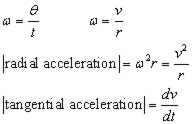
Describing the circle - position vector R
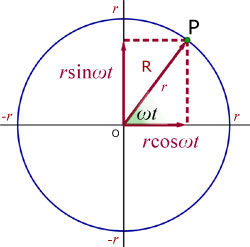
i & j are unit vectors along the x and y-axis respectively.
The position vector R of a particle at P from O, at time t, is given by:
![]()
As the position vector R rotates anti-clockwise, the particle at P traces out a circle of radius r .
The velocity vector V
The velocity vector V at an instant is given by differentiating the position vector R with respect to t .
Here the unit vectors i & j, parallel to the x and y-axes, are centred on the particle at P.

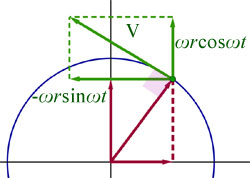
the magnitude of the velocity is given by:
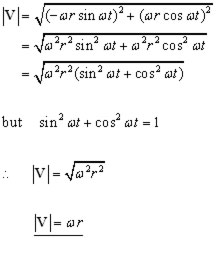
The acceleration vector A
The acceleration of the particle at P is given by differentiating V with respect to t .
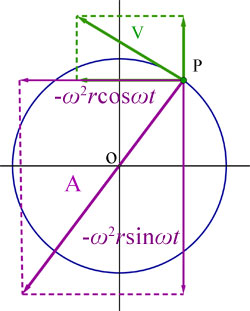
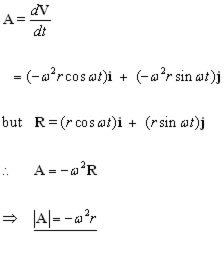
Example
A satellite is moving at 2000 ms-1 in a circular orbit around a distant moon.
If the radius of the circle followed by the satellite is 1000 km, find:
i) the acceleration of the satellite
ii) the time for the satellite to complete one full orbit of the moon in minutes(2d.p.).
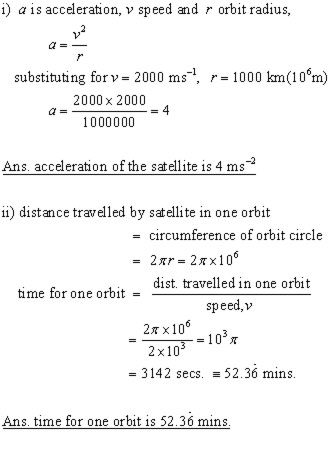
Non-uniform circular motion(vertical circle)
A more in-depth treatment of motion in a vertical circle is to be found in 'kinetics/more circular motion'.
Here we look at the more general case of the acceleration component along the circle and the component towards the centre varying.

Example
A particle starts to move in a circular direction with an angular speed of 5 rad s-1 .
The radius of the circle of motion is 4 m, and the angular speed at time t is given by,
![]()
What is,
i) the linear speed of the particle 6 secs. after it starts moving?
ii) the resultant particle acceleration?
(answers to 1 d.p.)
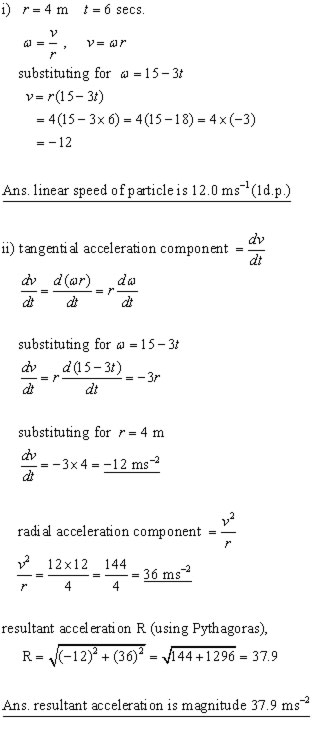
[ About ] [ FAQ ] [ Links ] [ Terms & Conditions ] [ Privacy ] [ Site Map ] [ Contact ]
